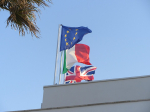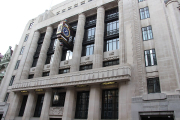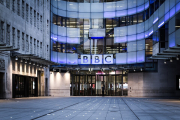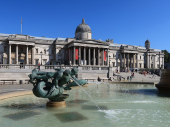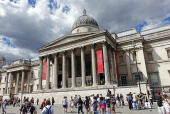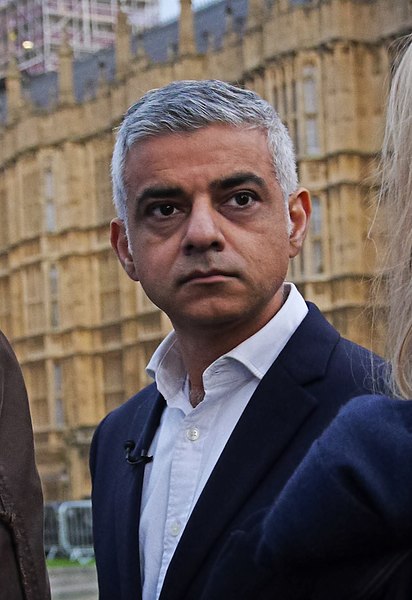
The Mayor of London, Sadiq Khan, has today announced new plans to clean up toxic air at schools in the worst polluted areas of the capital.
Bold measures introduced by the Mayor prior to the Covid-19 pandemic have already cut the number of state schools with illegal levels of pollution by 97 per cent – from 455 schools in 2016 to just 14 in 2019. But the Mayor is determined to continue to work in partnership with the boroughs to do more to tackle poor air quality around schools, which stunts the growth of children’s lungs and worsens chronic illness, such as asthma, lung and heart disease.
New data from the Breathe London air quality monitoring project reveals that almost 40 per cent of the NOx pollution at schools comes from road transport, with diesel cars being the single biggest local contributor to NOx pollution at London primary schools.
Today Sadiq announced a new London Schools Pollution Helpdesk. Starting in the new year, the helpdesk will support schools London-wide to deliver air quality audits and will prioritise the remaining schools in areas of London still exceeding or nearly exceeding legal pollution levels. Audit recommendations for measures to help cut pollution could include closing surrounding roads to traffic at school pick-up and drop-off times, walking and scooting campaigns, adding green infrastructure like green screens and tackling engine idling.
This will build on the Mayor’s successful School and Nursery Air Quality Audits Programme which has delivered audits at 50 schools and 20 nurseries across the capital’s most polluted areas. Global Action Plan will be co-ordinating the Schools Forum developed to support the audit programme in order to share best practice. The charity recently launched the Clean Air Schools Framework that helps any school to work out which air pollution actions are best for them as part of a clean air action plan. It provides guidance and resources to help implement the plan, building on the knowledge from the Mayor’s audit programme and will complement the London Schools Pollution Helpdesk being announced today.
Transport for London has funded 430 new School Streets – where roads surrounding schools are closed to motor traffic at drop-off and pick-up times – across London through its Streetspace plan to help avoid a damaging car-led recovery from coronavirus. Over 300 of these have already been delivered in 23 boroughs across London. The Mayor has also commissioned a study monitoring the air quality benefits at some of these new School Streets.
TfL data from 2018 showed the school run made up a quarter of weekday morning traffic, with the average school journey being less than one kilometre which is around a 10-minute walk. By providing funding for boroughs to introduce more School Streets, it will improve road safety and encourage more families to switch to walking, cycling or scooting – helping improve air quality and reduce congestion. Being physically active also improves pupils’ health and wellbeing, and increases attendance and attainment.
These new measures, coupled with bold policies including the Ultra Low Emission Zone, cleaner buses and taxis and reduction in construction emissions, will further clean up the air that London’s children breathe.
There are two main air pollutants of concern in London, based on their impact on human health: nitrogen dioxide (NO2) and particulate matter (PM2.5). Poor air quality stunts the growth of children’s lungs and worsens chronic illness, such as asthma, lung and heart disease. There is also emerging evidence of impacts on mental health and an increased vulnerability to the most severe impacts of COVID-19.
For particulate matter the challenge is even greater still. All schools in London still exceed the World Health Organization guideline for PM2.5. This is why we need the Government to adopt legally binding targets in the Environment Bill and give London the powers it needs to address sources of particulate matter.
The Mayor of London, Sadiq Khan, said: “I am doing everything in my power to stop Londoners breathing air so filthy that it damages children’s lungs and causes thousands of premature deaths every year. The Ultra Low Emission Zone has already cut toxic air by a third and led to reductions in roadside nitrogen dioxide that are five times greater than the national average.
“Since 2016, there has been a 97 per cent reduction in the number of schools in areas which exceed the legal limit, and I’m committed to bringing that number down to zero.
“We know there is still more to do. Pollution isn’t just a central London problem, which is why I am committed to expanding the ULEZ next year. I have also consistently demanded that the Government match my ambitions and improve the new Environment Bill to include legally binding WHO recommended limits to be achieved by 2030, and to give cities the powers we need to eradicate air pollution.”
Photo by Shayan Barjesteh van Waalwijk van Doorn, Wikimedia commons.



















